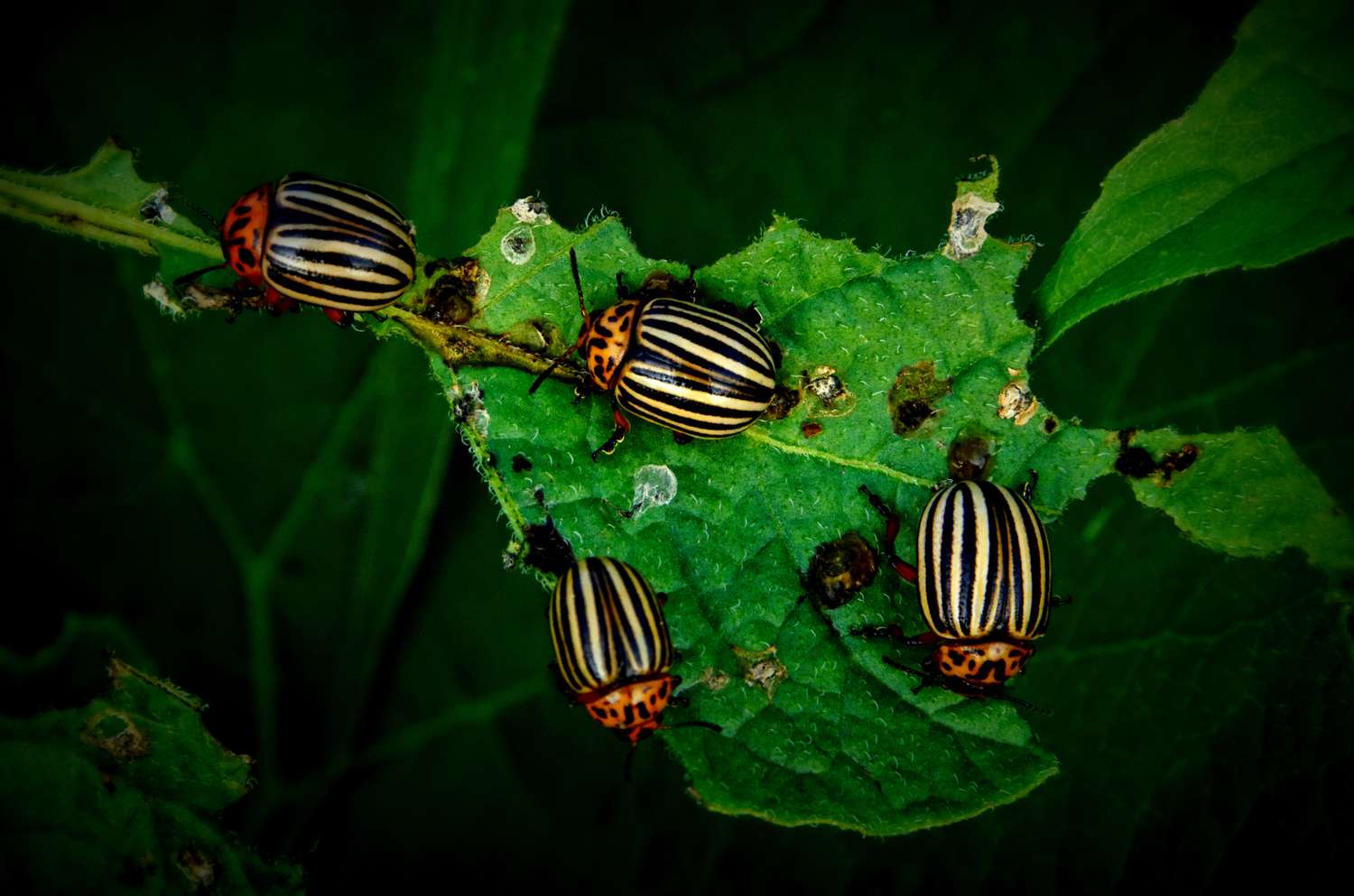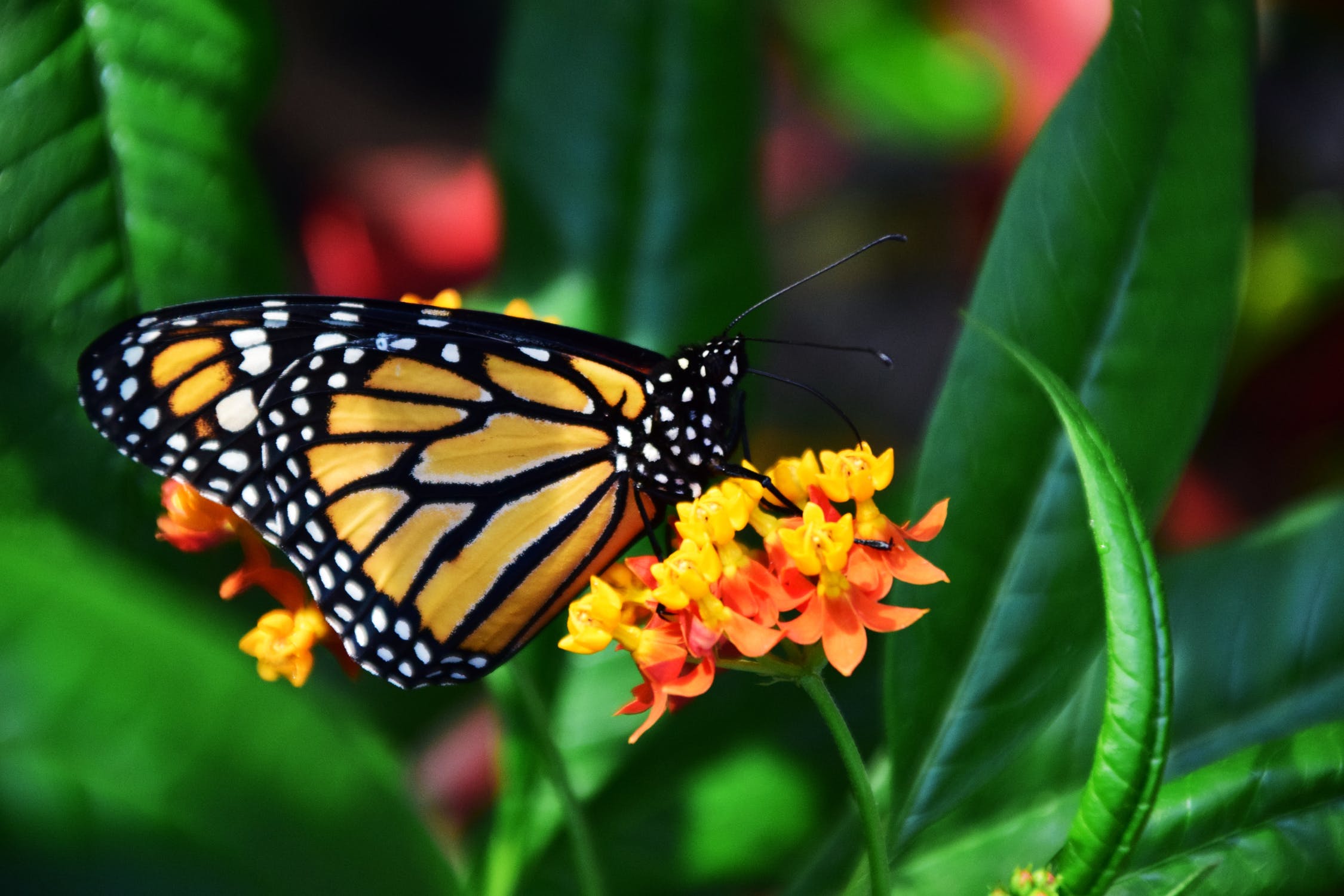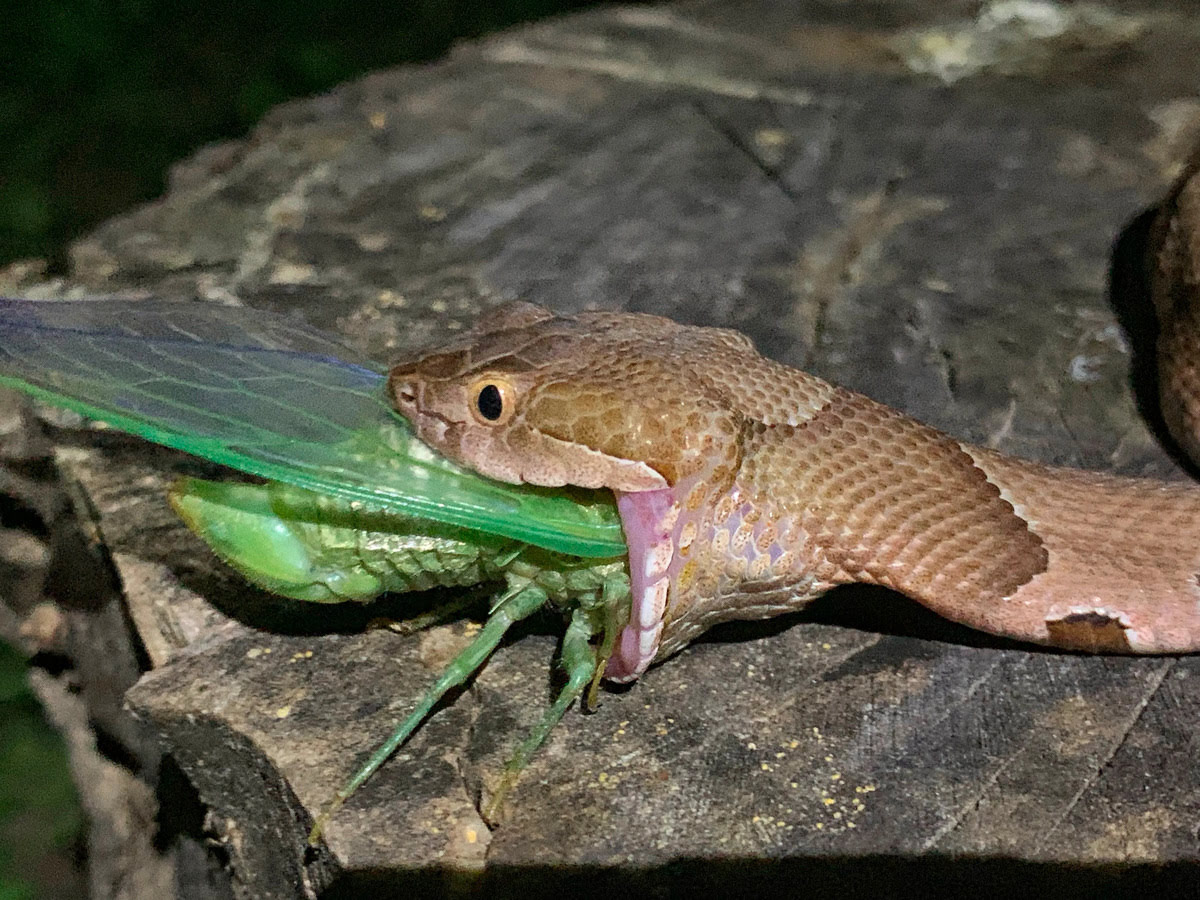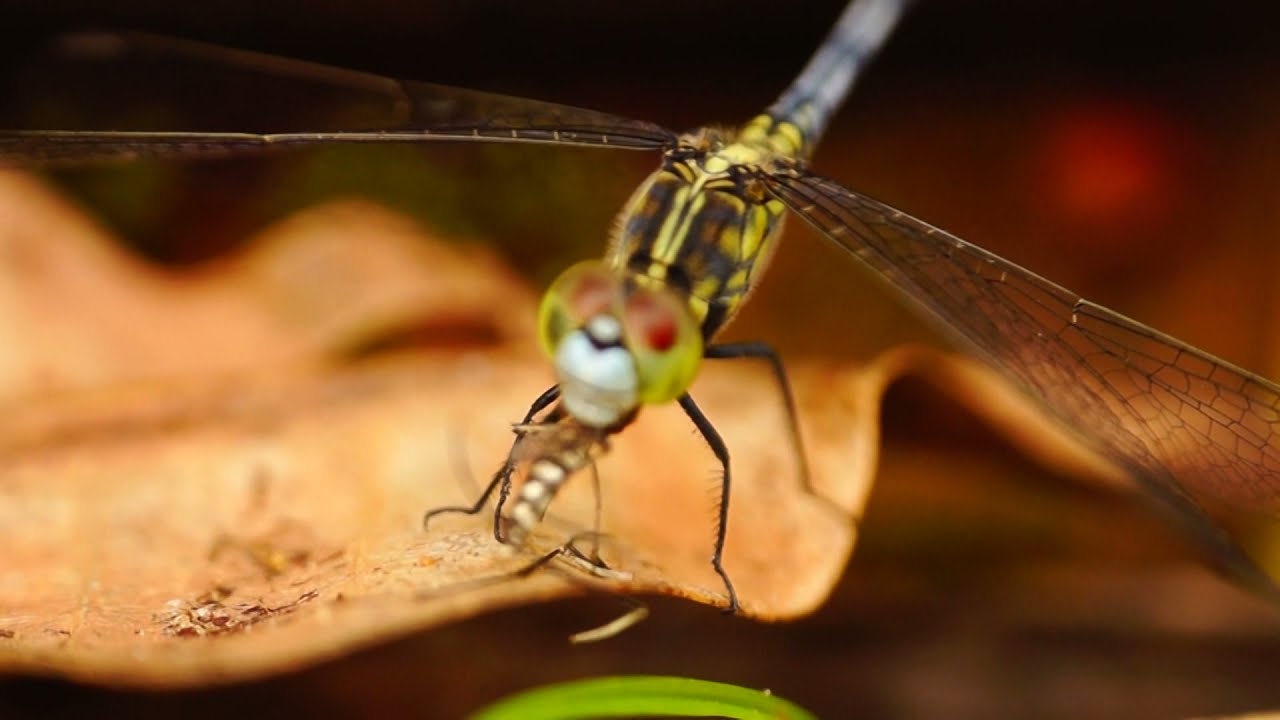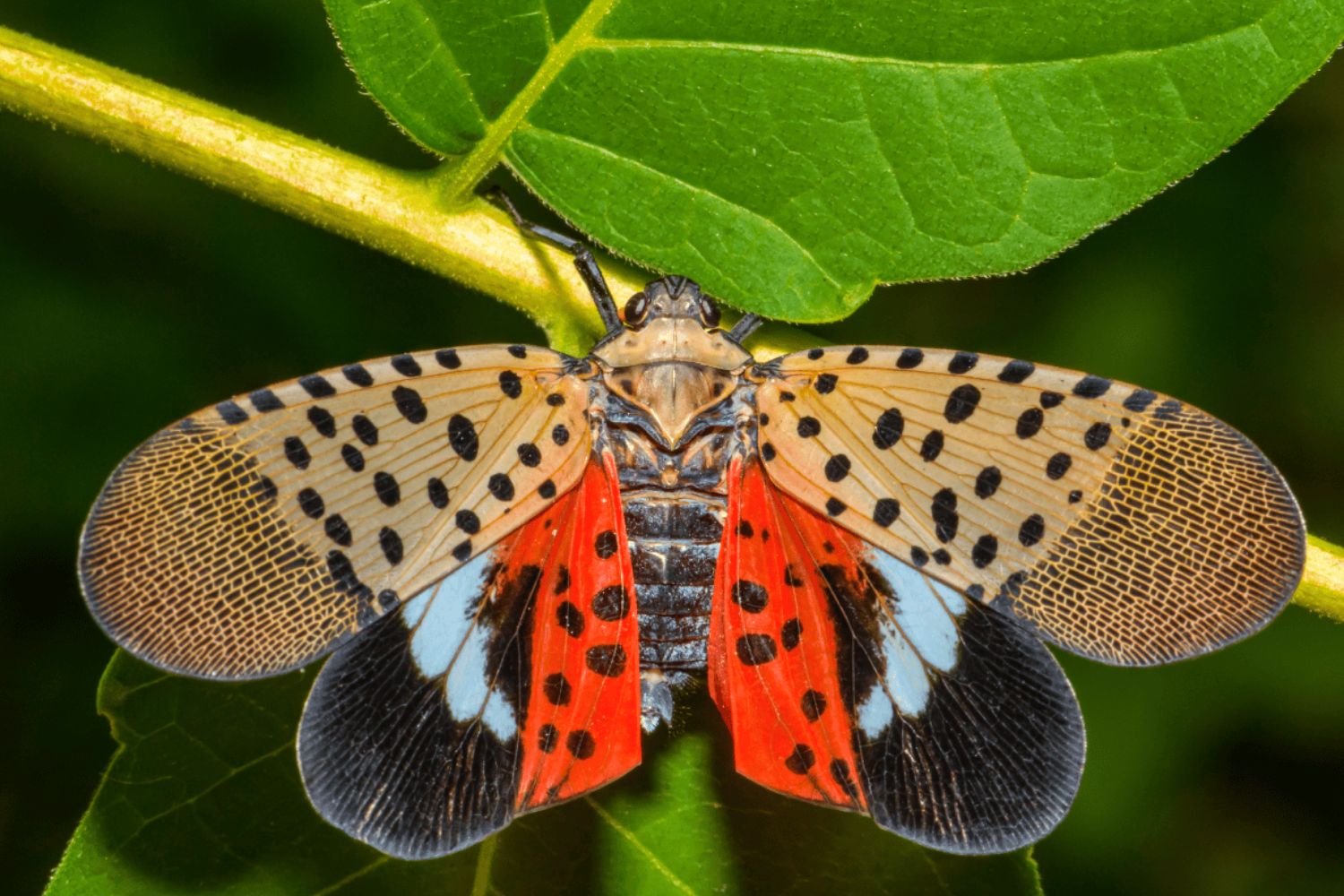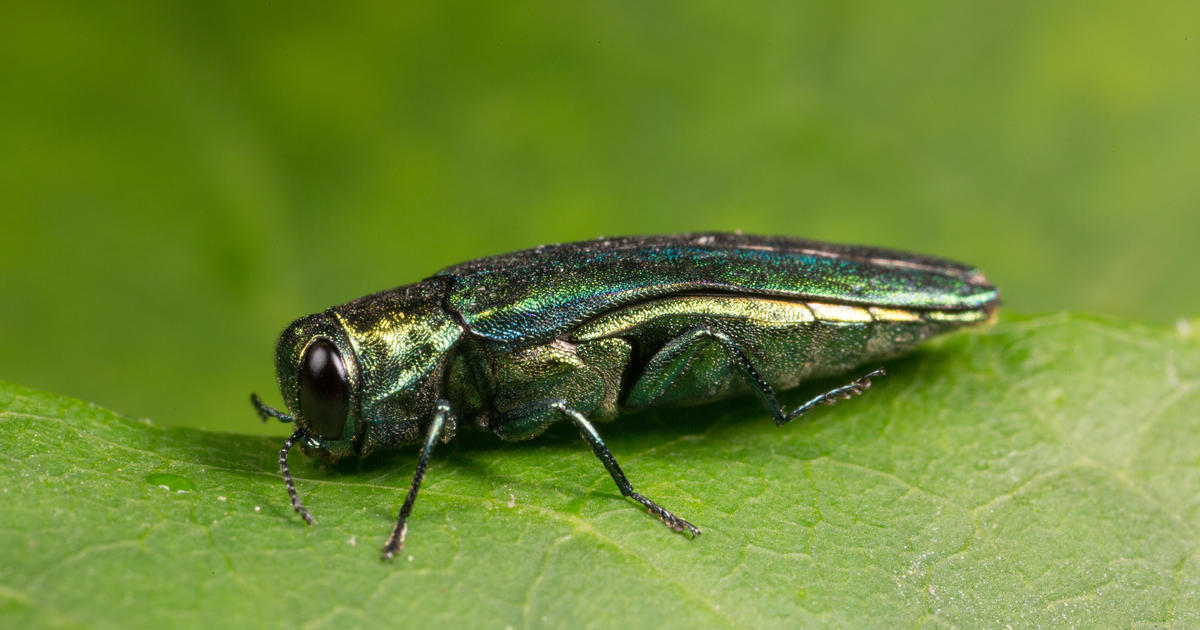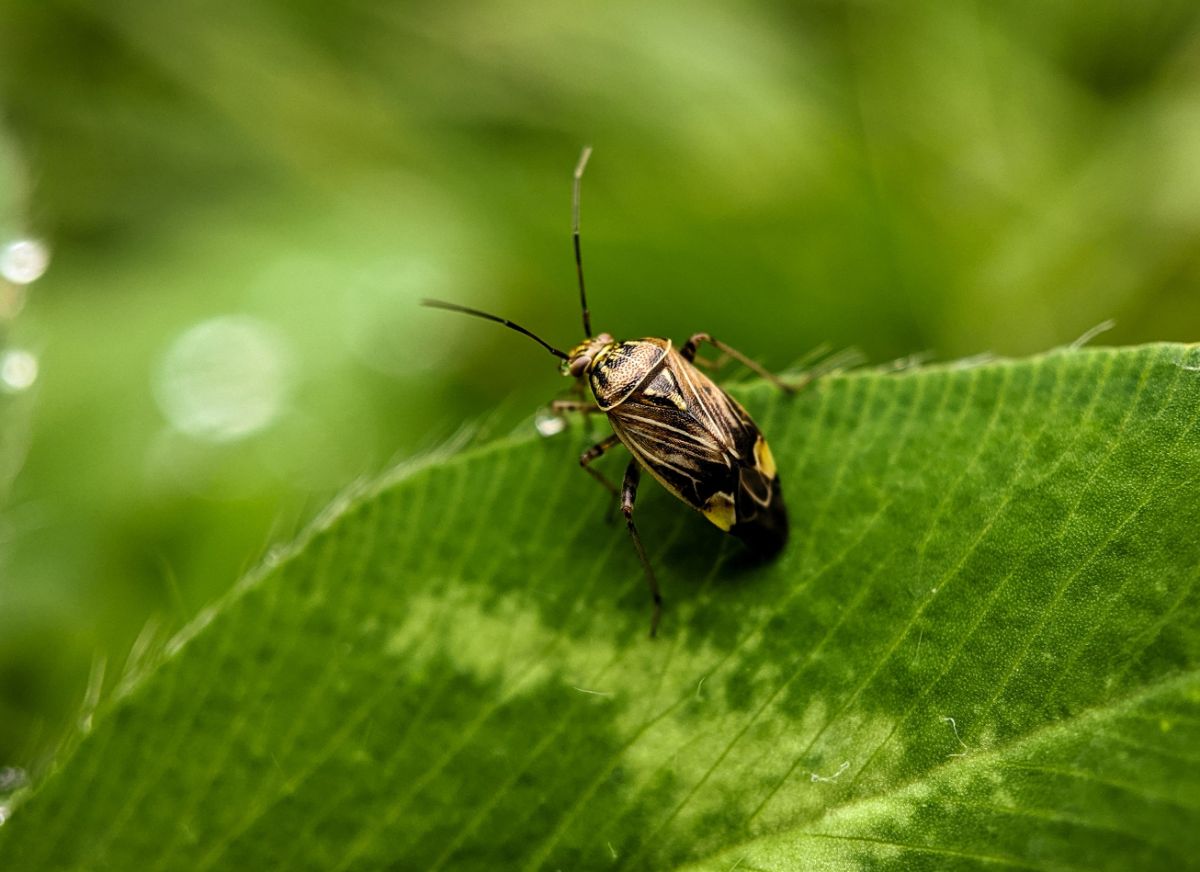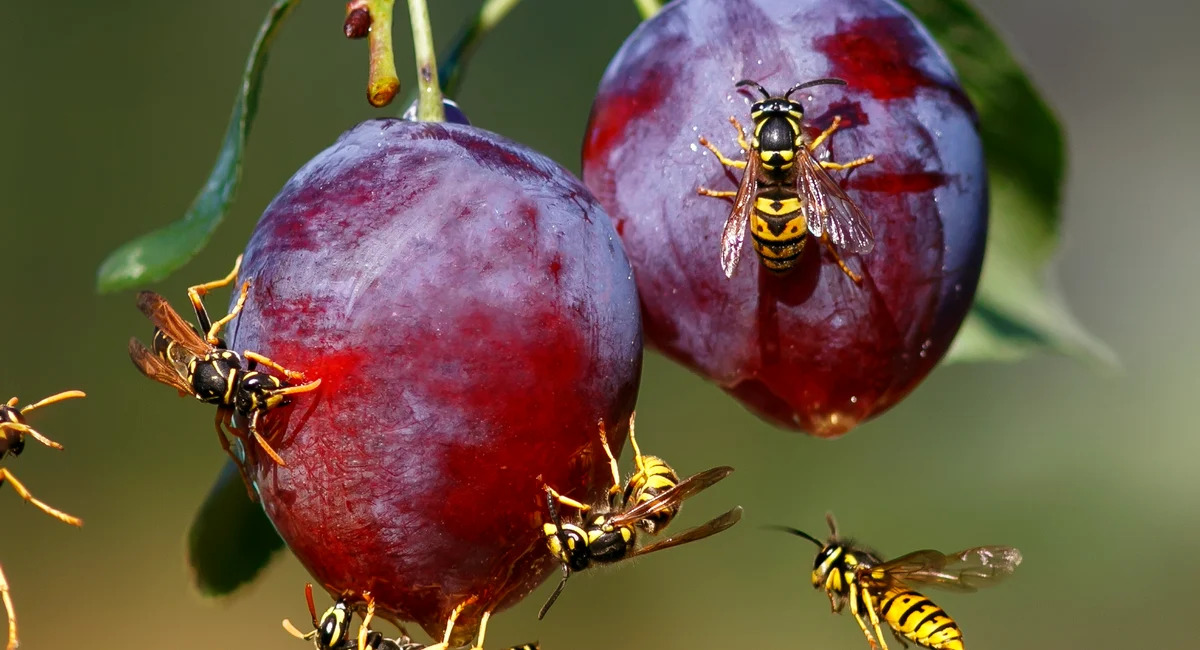Home>Gardening News and Trends>Latest News>What Insects Eat Ants


Latest News
What Insects Eat Ants
Modified: February 6, 2024
Latest News: Discover what insects eat ants and learn about the fascinating world of ant predators and their feeding habits.
(Many of the links in this article redirect to a specific reviewed product. Your purchase of these products through affiliate links helps to generate commission for Chicagolandgardening.com, at no extra cost. Learn more)
Table of Contents
Introduction
Ants are fascinating creatures that have evolved to thrive in a multitude of habitats around the world. They play a crucial role in ecosystems, contributing to soil health, seed dispersal, and pest control. While ants may seem small and defenseless, they are not without their own set of predators. Insects, in particular, have adapted various strategies to prey upon ants, including feeding on their larvae, adults, or even stealing their resources. In this article, we will explore the intriguing world of insect predators and parasites that target ants.
Ants are commonly seen as diligent workers, scurrying about in search of food and maintaining their intricate colonies. However, they often find themselves becoming a meal for other insects. These opportunistic predators take advantage of the ants’ presence and exploit their weaknesses.
From a biological standpoint, ants are a valuable food source for many insects due to their abundance and accessible nests. Their small size and busy nature make them susceptible to predation, especially when they let their guard down.
It is important to note that not all insects that prey on ants do so exclusively. Some insects may consume ants along with other food sources, while others may focus primarily on ants due to their high nutritional value or the availability of ant colonies in their habitat.
Throughout this article, we will delve into the different categories of insects that target ants, including predatory insects that feed on ant larvae, predatory insects that feed on adult ants, as well as insect parasites that prey on ants and their colonies.
By understanding the intricate dynamics of insects preying on ants, we can gain a deeper appreciation for the complex interactions taking place in nature. So let’s embark on this journey to discover the incredible world of insect predators and parasites that have honed their skills to feed on ants.
Ants as Prey
Ants, despite their efficient collective behavior and strong defensive mechanisms, are not immune to being hunted by other insects. Due to their small size and abundance, ants represent a plentiful food source for a wide variety of predators in different ecosystems.
Many insect predators have developed specialized adaptations to target ants. These adaptations give them an advantage in capturing and overpowering their unsuspecting prey. Some predators have venomous stingers or mandibles, which they use to paralyze or kill ants. Others rely on stealth and agility to launch surprise attacks.
The primary reason ants are sought after by predators is their abundance. Ant colonies can contain thousands or even millions of individuals, making them an easy and convenient source of food. Additionally, ants are known for their willingness to venture far from their nests in search of food, which exposes them to potential predators.
Furthermore, ants are an attractive prey for insects because of their relatively high nutritional value. They are rich in proteins, fats, and carbohydrates, which provide essential nutrients for the predator’s survival and reproduction. Some predacious insects have evolved specific hunting techniques to maximize their consumption of ants.
While ants have developed numerous strategies to defend themselves, such as biting, stinging, and releasing alarm pheromones, they are not always successful in deterring their attackers. Predators have evolved countermeasures to overcome the ant’s defense mechanisms, enabling them to successfully capture and consume their prey.
Ant predators occupy various ecological niches and can be found in different habitats across the globe. In forests, ants are targeted by predators such as beetles, spiders, and other insects. In grasslands, ants may fall prey to birds, lizards, and rodents. Even in urban environments, ants are hunted by creatures such as cockroaches and house centipedes.
The relationship between ants and their predators is dynamic, with both sides constantly adapting and evolving. Predators have developed specialized behaviors and adaptations in response to the ant’s defenses, while ants have evolved new ways to counteract predation pressure. This ongoing ecological arms race ensures the survival of both predators and ants, shaping the diverse ecosystems we observe today.
In the following sections, we will explore the specific types of predatory insects and parasites that target ants. From insects that prey on ant larvae to those that feed on adult ants, we will uncover the fascinating strategies and relationships that exist within the complex world of ant predation.
Insect Predators of Ants
Among the many predators in the insect world, there are several species that have developed specializations to specifically prey upon ants. These insect predators have evolved various strategies and adaptations to effectively capture and consume their ant prey.
One common group of ant predators is beetles. Beetles belonging to the family Carabidae, commonly known as ground beetles, are voracious predators of ants. These beetles possess strong mandibles and a robust exoskeleton, allowing them to take on ants of various sizes. They are known to actively hunt ants on the ground, relying on their speed and agility to capture their prey.
Other beetle families, such as Staphylinidae (rove beetles) and Histeridae (clown beetles), also include species that feed on ants. Rove beetles utilize a combination of speed and camouflage to ambush ants, while clown beetles are often found near ant nests, where they scavenge on dead ants and larvae.
Spiders are another group of insect predators known to prey on ants. They use their silk-spinning abilities and stealth to ensnare unsuspecting ants. Some spiders, such as the ant-mimicking spiders, are even able to mimic the appearance and behavior of ants to deceive their prey and get closer for an easy capture.
Assassin bugs, like the Zelus sp. and Apiomerus sp., are predatory insects that also target ants. These bugs have piercing mouthparts that they use to inject enzymes into their prey, liquefying their internal organs for easy consumption. They are ambush predators that patiently wait for ants to come within reach before striking.
Additionally, some wasp species specialize in hunting ants. One example is the velvet ants, which are actually a group of wasps. Female velvet ants are wingless and robustly built, allowing them to enter ant nests and lay their eggs on ant larvae. Once hatched, the velvet ant larvae feed on the ant larvae, effectively parasitizing the ant colony.
Other insect predators, such as dragonflies, robber flies, and mantises, have also been observed preying on ants. These insects employ their speed, agility, and sharp mouthparts to make quick work of their ant prey.
The relationship between insect predators and ants is an interesting ecological dynamic. While ants have formidable defense mechanisms, predators have evolved specific adaptations to counteract these defenses or take advantage of the ants’ behavioral patterns. This evolutionary dance between predator and prey continues to shape the diversity and complexity of insect interactions in ecosystems worldwide.
In the next sections, we will explore specific types of predatory insects that specialize in feeding on different stages of an ant’s life, from larvae to adults. We will unravel the fascinating strategies employed by these predator insects to successfully target and consume ants.
Predatory Insects that Feed on Ant Larvae
Ant larvae, being the young and vulnerable members of the colony, are prime targets for many predatory insects. These insects have adapted specialized techniques and physical attributes to effectively hunt and consume ant larvae.
One group of predatory insects that target ant larvae is the hoverflies, which belong to the family Syrphidae. Hoverfly larvae, also known as rat-tailed maggots, have elongated bodies and breathing tubes, allowing them to live in aquatic habitats where ant colonies may be located. They actively search for ant larvae in water sources or damp areas and consume them as a nutritious food source.
Another insect predator of ant larvae is the larvae of some species of beetles, such as ladybird beetles. The larvae of ladybird beetles are voracious predators that consume a variety of small insects, including ant larvae. They are equipped with strong mandibles and microscopic bristles on their bodies, enabling them to capture and devour their prey efficiently.
Parasitic wasps are also known to take advantage of ant larvae as hosts for their developing young. These wasps inject their eggs into ant larvae, allowing the developing wasp larvae to feed on and eventually kill the ant larvae. Once the wasp larvae have matured, they emerge from the ant larvae to complete their life cycle.
Some species of ground beetles, belonging to the family Carabidae, feed on ant larvae as well. These beetles possess powerful jaws that allow them to crush and consume the soft-bodied larvae. They are often found in or near ant colonies, taking advantage of the abundance of ant larvae as a reliable food source.
Insect predators, like spiders and ants themselves, may also include ant larvae in their diet. Spiders with web-building behaviors may ensnare ant larvae that inadvertently wander into their webs. Likewise, some ant colonies engage in intraspecific predation, where worker ants from neighboring colonies raid each other’s nests and consume ant larvae.
The predation of ant larvae is driven by the high nutritional value they provide. Ant larvae are rich in proteins, fats, and other essential nutrients, making them an attractive food source for many insects. Additionally, ant larvae are immobile and less capable of defending themselves compared to adult ants, making them easier targets for predators.
By preying on ant larvae, these predatory insects play a role in regulating ant populations and maintaining a balance within ecosystems. They contribute to the survival and growth of their own species while simultaneously influencing the dynamics of ant colonies.
In the following sections, we will explore the different insects that specifically prey on adult ants, as well as the fascinating world of insect parasites that target ants and their colonies.
Predatory Insects that Feed on Adult Ants
While ant larvae are a preferred target for many insect predators, adult ants are not exempt from being hunted. Various species of insects have evolved strategies to take advantage of adult ants as a food source, capitalizing on their foraging behavior and exploiting their weaknesses.
One group of predatory insects that feed on adult ants is the assassin bugs, particularly those belonging to the subfamily Emesinae. These insects have long, needle-like mouthparts called rostrums, which they use to pierce the exoskeleton of ants. Assassin bugs inject enzymes into their prey, breaking down the internal tissues and allowing them to consume the liquified contents.
Some species of ants are targeted by specialized bees known as bee wolves. These solitary wasps capture ants and paralyze them with venom before bringing them back to their nest. The paralyzed ants are then used as food for the wasp larvae, ensuring a steady supply of prey for their developing young.
Another group of predatory insects that prey on adult ants is the antlions. These insects, in their larval stage, construct funnel-shaped pits in sandy soil and wait for ants to stumble in. Once an ant falls into the pit, the antlion larva uses its large, sickle-shaped mandibles to capture and consume the trapped prey.
Some species of beetles, such as ground beetles (Carabidae), also target adult ants. These beetles are fast and agile predators that actively pursue and capture ants on the ground. They use their sharp mandibles to disarm and neutralize their ant prey.
In addition to other insects, certain species of spiders are known to feed on adult ants. These arachnids, with their stealthy hunting techniques, spin webs near ant trails or nest entrances to intercept and capture passing ants.
Furthermore, certain ant-mimicking bugs, such as the genus Myrmecoris, have evolved to resemble ants in appearance and behavior. They use their mimicry to get close to ants and then attack and feed on the unsuspecting ants.
The predation of adult ants by these insects serves multiple purposes. Adult ants are often rich in proteins and nutrients, making them an energy-packed food source. By preying on adult ants, these predatory insects establish their own populations and contribute to the stability and balance of their respective ecosystems.
It’s important to note that while predators play a vital role in regulating ant populations, they rarely cause significant harm to the overall ant population. Ants are resilient creatures, capable of recovering from predation through their reproductive capabilities and sophisticated social systems.
In the subsequent sections, we will explore another category of insects that target ants in a different way – through parasitism. These insect parasites have developed unique strategies to infiltrate and exploit ant colonies for their own survival and reproduction.
Insect Parasites of Ants
In addition to predatory insects, ants also have to contend with the presence of various parasites that exploit their social structures and resources. These insect parasites have evolved specialized adaptations to infiltrate ant colonies, hijack the ants’ labor, and utilize the colony’s resources for their own survival and reproduction.
One group of insect parasites that target ant colonies is the social parasites, commonly referred to as “ant thieves.” These parasites mimic the pheromones and behaviors of their ant hosts to infiltrate the colony. Once inside, they manipulate the ants into caring for their offspring and providing them with food. The social parasites gradually take over the colony, eventually eliminating the host ants and replacing them with their own offspring.
Some social parasites, such as the parasitic ants of the genus Polyergus, specifically target the colonies of other ant species. These parasitic ants launch raids on host ant colonies, capturing and enslaving host worker ants to perform tasks within their own nests. The host ants become entirely dependent on the parasitic colony and are compelled to care for the parasitic ant larvae and meet their needs.
Another type of insect parasite that targets ants is the strepsipterans, commonly known as “twisted-wing parasites.” Strepsipteran larvae actively seek out suitable ant hosts and infiltrate their bodies. Once inside, they disrupt the ant’s development by impairing their reproductive organs and manipulating their behavior to benefit the parasite. The twisted-wing parasites eventually emerge as adults from the ant host, completing their life cycle.
Some species of flies, such as the genus Phoridae, are known as “ant decapitators” due to their peculiar strategy. Female phorid flies lay their eggs near ant colonies, and when the fly larvae hatch, they seek out ants to infest. The fly larvae burrow into the ant’s body and migrate to the ant’s head, where they release chemicals that manipulate the ant’s behavior. This leads the ant to wander away from the safety of the colony, facilitating the fly larvae’s development. Eventually, the fly larvae decapitate the ant as they emerge, hence their macabre nickname.
Parasitic wasps also target ants as hosts for their developing offspring. These wasps inject their eggs into live ant hosts, where the wasp larvae consume the internal organs of the ant, eventually killing it. The wasp larvae then pupate inside the ant’s body and emerge as adults once fully developed. Some parasitic wasps specifically target ant larvae as hosts, while others target adult ants.
These insect parasites have evolved unique strategies to exploit the resources and social structure of ant colonies. By infiltrating ant nests, manipulating ant behavior, and utilizing the ants’ labor and resources, these parasites ensure their own survival and reproductive success.
Ant colonies have also developed various strategies to detect and defend against parasite infiltration. They employ chemical recognition systems to identify intruders and engage in aggressive behaviors to ward off potential parasites. However, the ongoing arms race between parasites and ants continues to shape the intricate dynamics of these interactions.
Now that we have explored the world of insect parasites targeting ants, let’s conclude our journey by summarizing the fascinating insights we’ve gained into the complex relationships and strategies employed between ants, predators, and parasites.
Insect Parasites that Target Ant Colonies
While some insect parasites target individual ants, there are others that have evolved to specifically exploit the entire colony as their host. These parasites have developed intricate mechanisms to infiltrate, manipulate, and utilize ant colonies for their own survival and reproduction.
One group of insect parasites that target ant colonies is the “slave-making ants” or “dulosis ants.” These parasites belong to the genus Polyergus and are social parasites that exclusively raid and enslave other ant colonies. The Polyergus ants infiltrate the host colony, stealing the pupae and larvae of the host ants. Once the stolen brood matures, they become the workforce of the Polyergus colony, caring for the parasitic ants’ offspring as if they were their own.
Another example of parasites that target entire ant colonies are some species of parasitic beetles, such as the blister beetles (Meloidae). The larvae of these beetles are known as “triungulins” and are specialized to infiltrate ant colonies. They mimic the pheromones of the host ants and are carried back to the ant colony, where they exploit the ants’ resources and manipulate their behavior. The parasitic beetle larvae consume ant eggs, larvae, and food stores, depriving the ant colony of important resources.
Insect parasites, such as the genus Strepsiptera, also target ant colonies. The male strepsipterans have adapted to fly and locate ant colonies, where they mate with the wingless female strepsipterans. The females then penetrate the ant nests, where they remain throughout their lives. The female strepsipterans manipulate the ants’ behavior, forcing them to care for the parasites’ brood while sacrificing their own reproductive capabilities.
Similar to individual ant parasites, some species of parasitic wasps also target entire ant colonies. These wasps inject their eggs directly into the ant colony, where the developing wasp larvae feed on ant larvae and pupae. This weakens the ant colony’s workforce and disrupts its development and growth. Once the wasp larvae have matured, they emerge from the ant colony to complete their life cycle as adults.
Insect parasites that target ant colonies have evolved intricate strategies to infiltrate and exploit their hosts’ intricate social structures. By manipulating ant behavior, consuming their resources, or enslaving the entire colony, these parasites ensure their own survival and reproduction at the expense of the ant colony’s well-being.
Ant colonies, in response to these parasite infiltrations, have also developed various defense mechanisms. They can detect intruders through chemical signals and engage in aggressive behaviors to fend off parasitic attacks. Some ant colonies have even developed specific behaviors, such as “self-grooming,” to mitigate the impact of parasites and maintain the health of the colony.
The dynamic relationship between parasites and ant colonies continues to shape the complex interactions within ecosystems. Parasites play an important role in regulating ant populations and contributing to the overall biodiversity of the environment.
With this deeper understanding of the diverse insect parasites that target ant colonies, our journey through the world of ant predation and parasitism comes to a close. We have explored the strategies and adaptations of predatory insects and parasites that have honed their skills to exploit the presence of ants in their habitats. These interweaving relationships illustrate the intricate balance and diversity of the natural world.
Insect Parasites that Target Ant Larvae
While some insect parasites target adult ants or entire ant colonies, there are others that specialize in exploiting ant larvae as their hosts. These parasites have adapted unique strategies to infiltrate ant nests and manipulate the ants’ behavior to ensure the survival of their own offspring.
One example of insect parasites that target ant larvae is a group of wasps known as “larval parasitoids.” These wasps lay their eggs on or near ant larvae, and once hatched, the wasp larvae will feed on the ant larvae, eventually killing them. The developing wasp larvae benefit from the rich nutritional resources provided by the ant larvae and use them as a means of nourishment and protection until they reach maturity.
Another type of insect parasites that target ant larvae are certain species of beetles, such as the “cuckoo beetles” (Staphylinidae). The female cuckoo beetles will lay their eggs near ant colonies, and once the eggs hatch, the beetle larvae actively search for ant larvae. The cuckoo beetle larvae attach themselves to the ant larvae and hitches a ride back to the ant nest. Once inside, the beetle larvae consume the ant larvae and utilize the resources of the ant colony for their development.
Some parasitoid flies, such as the genus Microdon, also target ant larvae as hosts. These flies lay their eggs near ant colonies, and when the fly larvae hatch, they mimic the appearance and behavior of ant larvae. The fly larvae infiltrate the ant nests and scavenge on the food resources and care provided by the worker ants, all while remaining disguised as part of the ant larvae brood.
Insect parasites that target ant larvae have evolved to take advantage of the rich nutritional value and vulnerable nature of ant larvae. By infiltrating ant nests and manipulating the ants’ behavior, these parasites ensure the survival and development of their own offspring.
Ant colonies have developed various mechanisms to detect and mitigate the presence of these parasite larvae. They may employ chemical recognition or grooming behaviors to detect and remove parasitic larvae from their brood. However, some parasites have evolved to mimic the appearance and behavior of ant larvae, making it more challenging for the ants to identify and eliminate them.
The interplay between insect parasites and ant larvae represents an ongoing evolutionary arms race, with the parasites adapting to successfully infiltrate and exploit ant colonies, while ants develop countermeasures to protect their offspring and maintain the health of their colonies.
By targeting ant larvae, insect parasites contribute to the regulation of ant population sizes, maintain biodiversity, and shape the dynamics of ant communities. These intricate relationships demonstrate the adaptive nature of the natural world and the strategies organisms employ to ensure their own survival and success.
With our exploration of insect parasites that target ant larvae, we have gained a deeper understanding of the remarkable strategies these parasites utilize to exploit the vulnerable stages of ant life. The complex web of interactions between ants, predators, and parasites continues to shape the diverse ecosystems we observe in nature.
Conclusion
The world of insects is a fascinating and intricate one, filled with predators and parasites that have evolved specialized adaptations to target ants. These insects have honed their skills to exploit the unique characteristics of ants, whether it be their larvae, adult workers, or entire colonies.
Ants, despite their impressive collective behaviors and defenses, are not immune to predation and parasitism. Insect predators such as beetles, spiders, assassin bugs, and mantises have developed strategies to capture and consume ants, taking advantage of their abundance and nutritional value.
Additionally, insect parasites have evolved intricate mechanisms to infiltrate ant colonies and exploit their resources. Social parasites enslave host ants or manipulate their behavior to ensure the survival and reproduction of their own offspring. Other parasites target the vulnerable stages of ant life, such as the ant larvae, consuming them or utilizing them as hosts for their own development.
The complex interactions between ants, predators, and parasites highlight the ongoing evolutionary arms race at play in nature. Ants have developed defense mechanisms to detect and fend off attackers, while predators and parasites have adapted to overcome these defenses or exploit them to gain access to valuable resources.
These interactions also contribute to maintaining balance and diversity within ecosystems. Predators and parasites regulate ant population sizes, influencing the structure and dynamics of ant communities. Furthermore, the adaptations and strategies of these insects shape the intricate web of relationships between organisms in the natural world.
By delving into the world of insect predators and parasites that target ants, we gain a deeper appreciation for the complexity and diversity of nature. It is a reminder that every organism, no matter how small, plays a crucial role in maintaining ecological balance and sustaining the intricate web of life on our planet.
As we continue to explore and understand the fascinating world of ants and their interactions with predators and parasites, we strengthen our knowledge of the natural world and its complexities. Through ongoing research and observation, we can continue to unravel the mysteries of these interactions and contribute to the conservation and appreciation of these remarkable creatures.

